Deciduous shrubs with colourful or eye-catching young stems are perfect for bringing interest to your garden in winter. Red and orange-stemmed dogwoods, bright white ornamental brambles and vivid green or yellow willows cannot fail to catch the eye, especially when they are backlit by the sun. Often the production of coloured stems in winter is stimulated by hard pruning (or coppicing) the previous spring.
If pruned annually, or every two to three years, most of the shrubs below will reach a height of 1.5-2.4m with a spread of around 1.8m. These recommended shrubs will tolerate or even enjoy wet conditions, and thrive on most soils, including clay and chalk. For the best winter stem colour, grow them in full sun.
Cornus sanguinea 'Midwinter Fire'
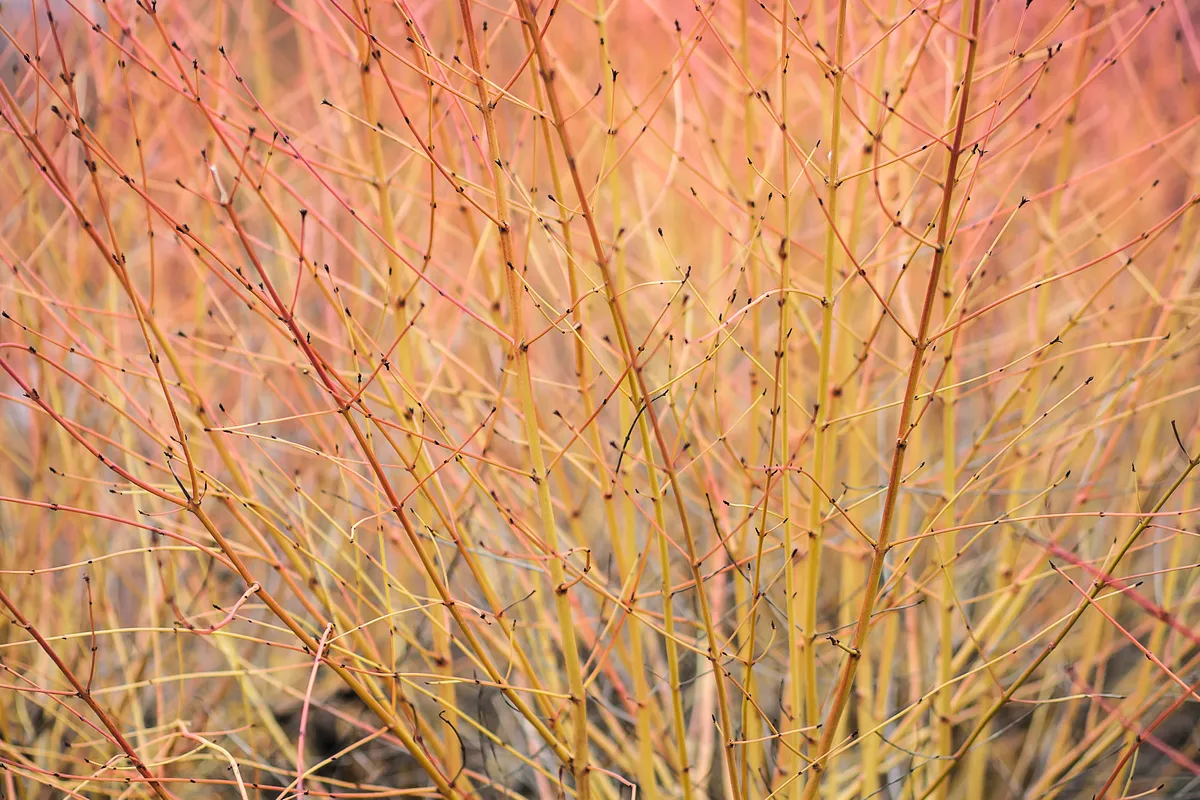
Cornus sanguinea 'Midwinter Fire', the blood-twig dogwood, is widely grown for its fiery winter stems. These are gold-orange at the base, glowing flame-orange towards the tips. In summer, insignificant white flowers are produced; the leaves turn orange-yellow in autumn before falling. A good choice for damp soil. 1.5m. RHS H6, USDA 4a-8b.
Cornus alba Baton Rouge ('Minibat')
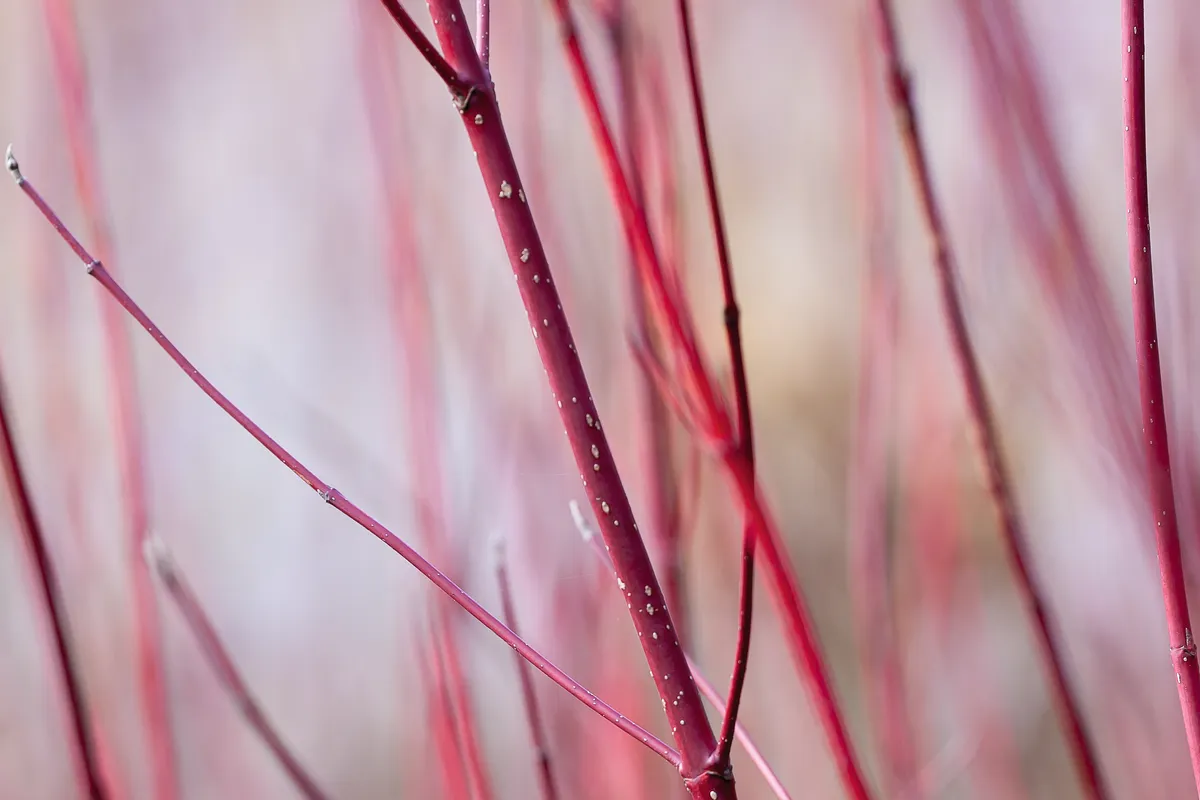
Cornus alba 'Baton Rouge' ('Minibat') is a striking dogwood with scarlet winter stems. Flattish heads of small, white spring flowers are followed by bluish-white berries. The dark-green leaves turn a rich purple in autumn. 1.5m. RHS H7, USDA 2a-8b.
Salix alba var. vitellina 'Yelverton'
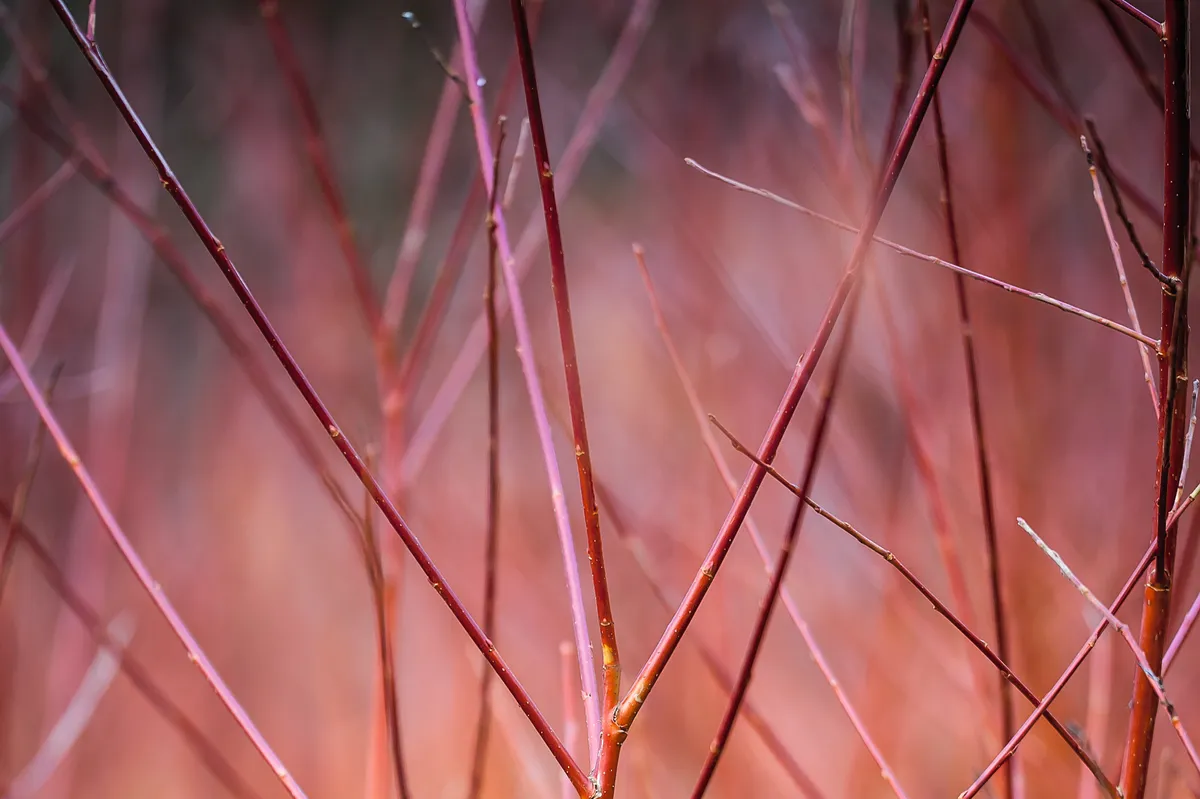
var.
'Yelverton', the golden willow, is a tree that is often grown as a shrub. It produces striking bronze-red stems in winter. Small catkins appear in late spring; the leaves are narrow and mid-green. A good choice for a damp spot.
Rubus biflorus
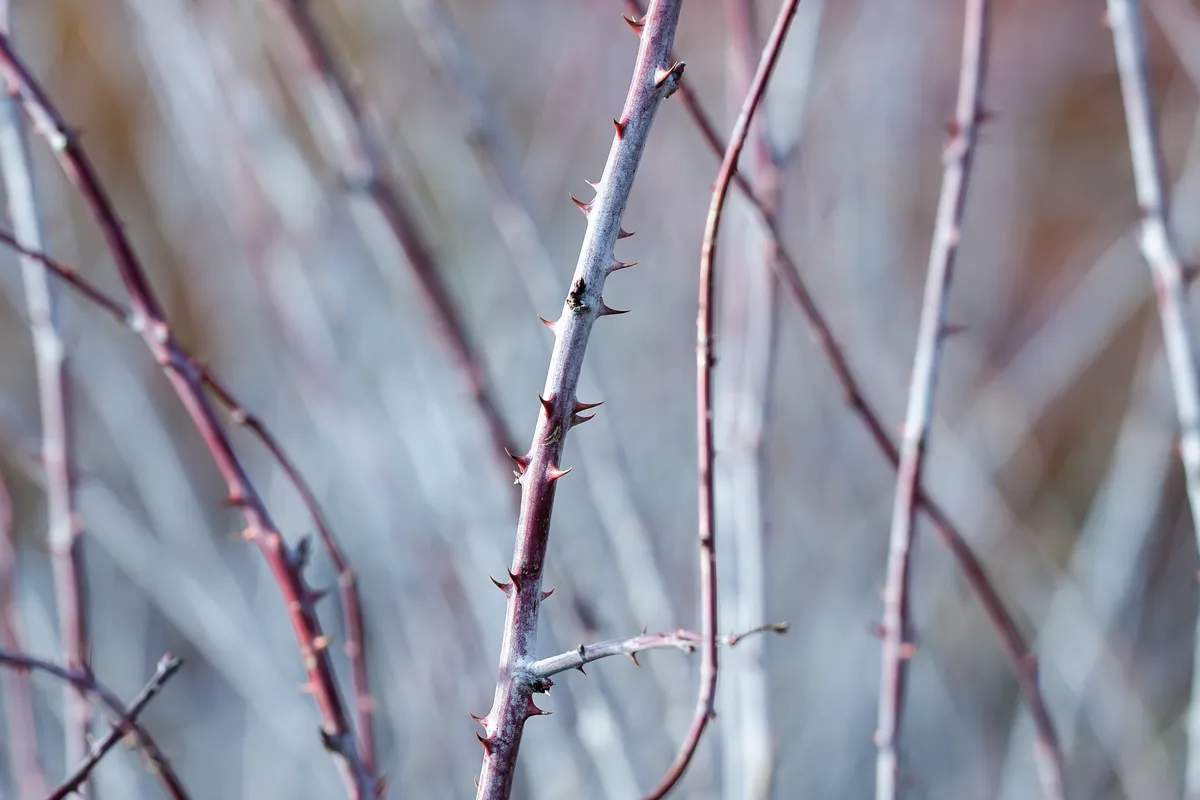
Rubus biflorus is a suckering shrub with upright, prickly stems that are covered in an eye-catching white bloom in winter. Small white flowers in summer are sometimes followed by small yellow fruits. Left unpruned this ornamental bramble makes an impenetrable thicket, so annual pruning to ground level in spring is the best practice. 3m. AGM. RHS H6, USDA 4a-8b.
Rubus thibetanus
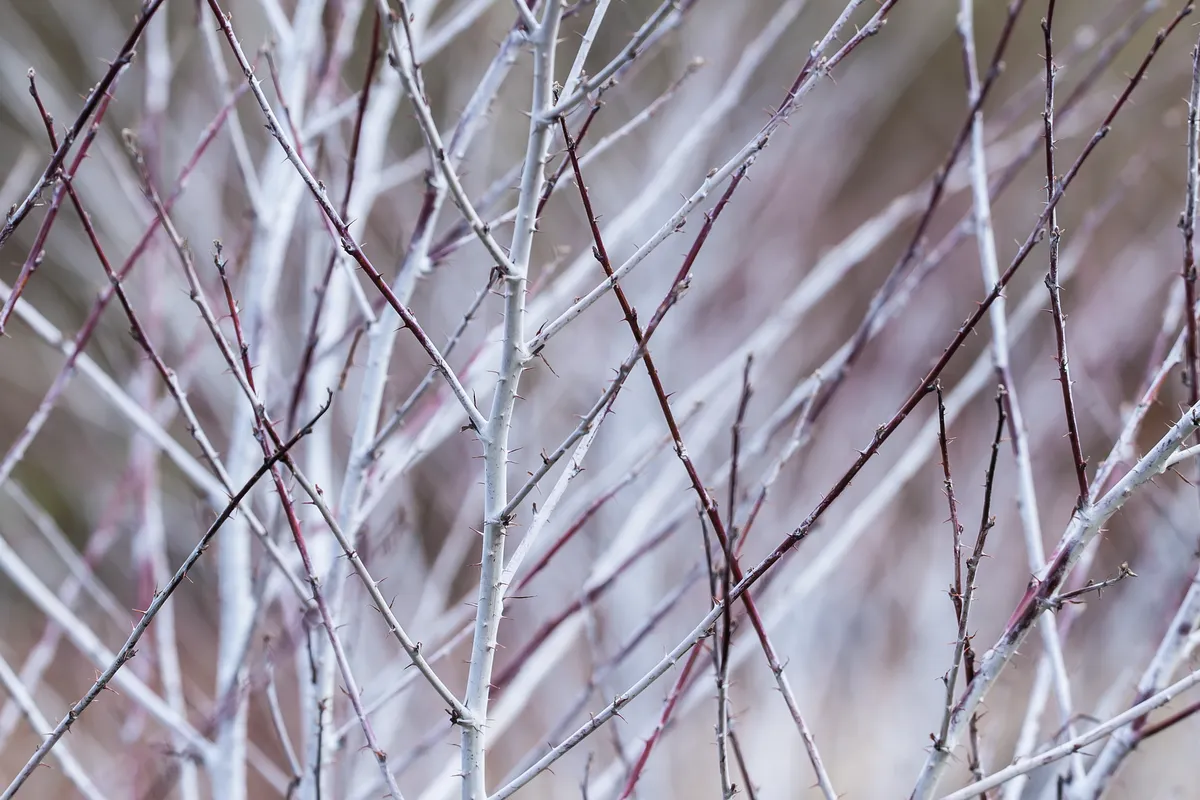
Rhubus thibetanus is also known as the ghost bramble, thanks to the chalky white bloom that covers the dark purple winter stems in winter to stunning effect. The stems can be upright or arching. Small, purplish flowers in spring develop into inedible black fruits. The fern-like leaves are green above, silver-white beneath. This ornamental bramble is ideal for growing under the light shade of trees. 90cm. AGM. RHS H6, USDA 4a-8b.